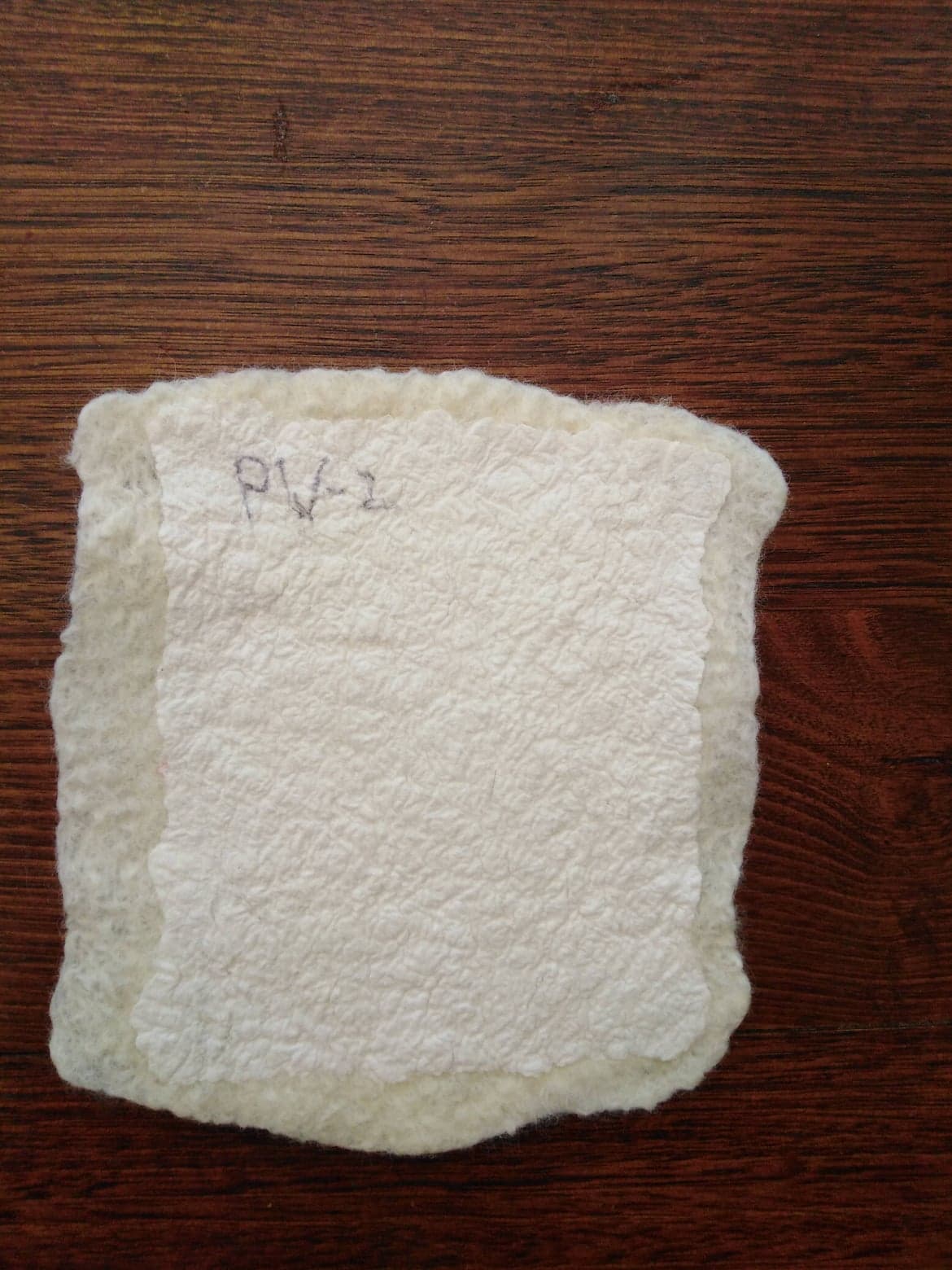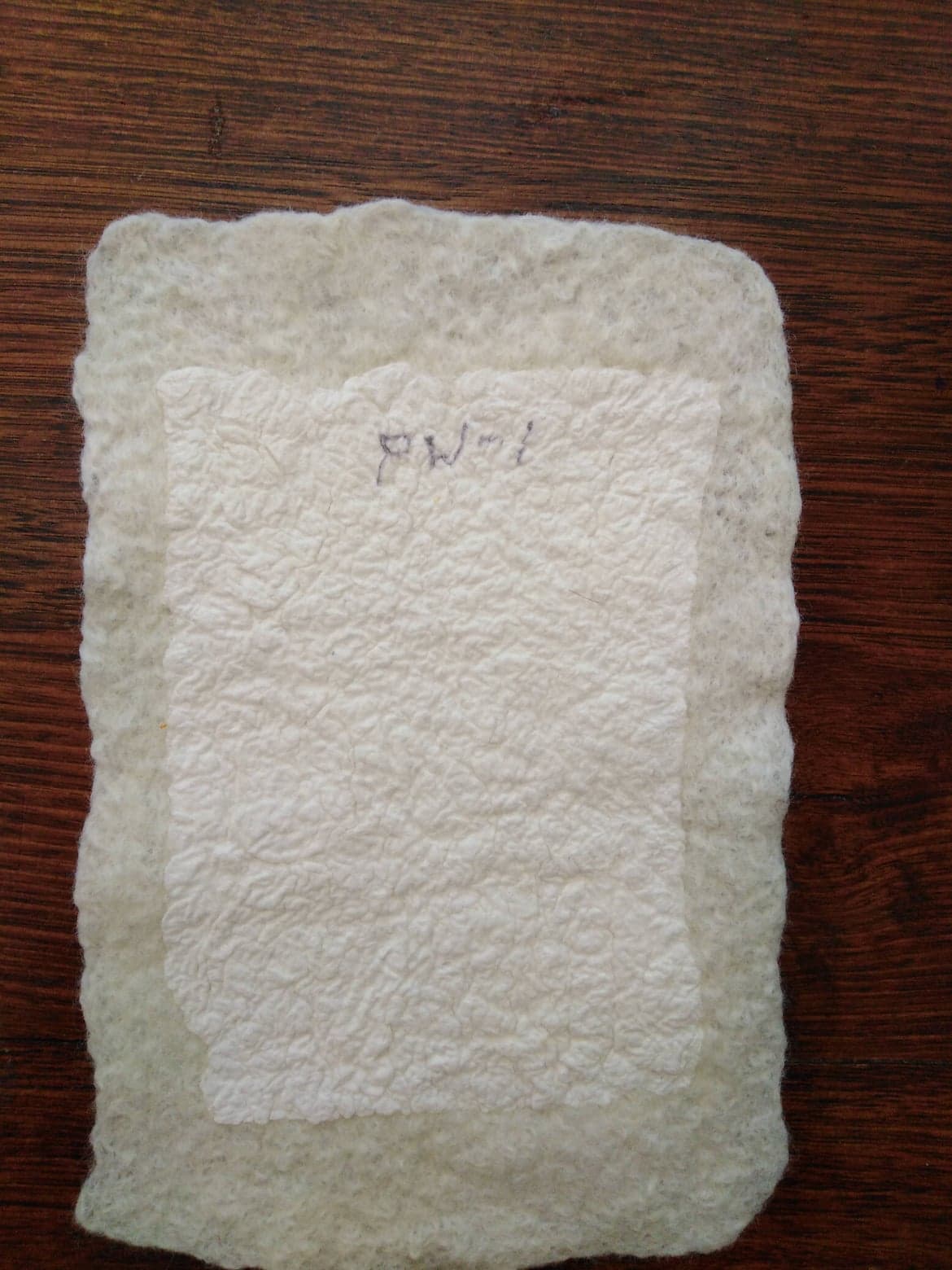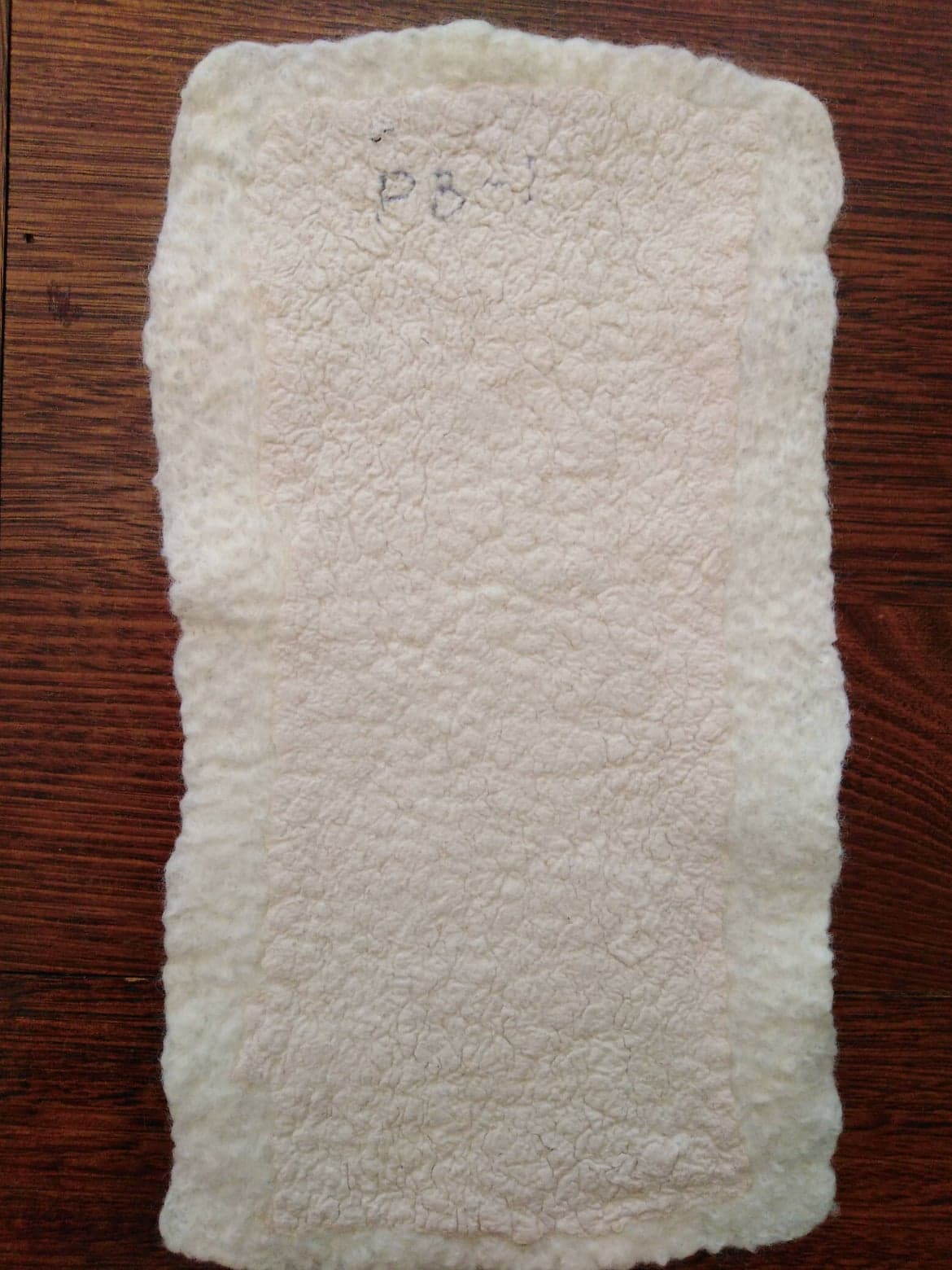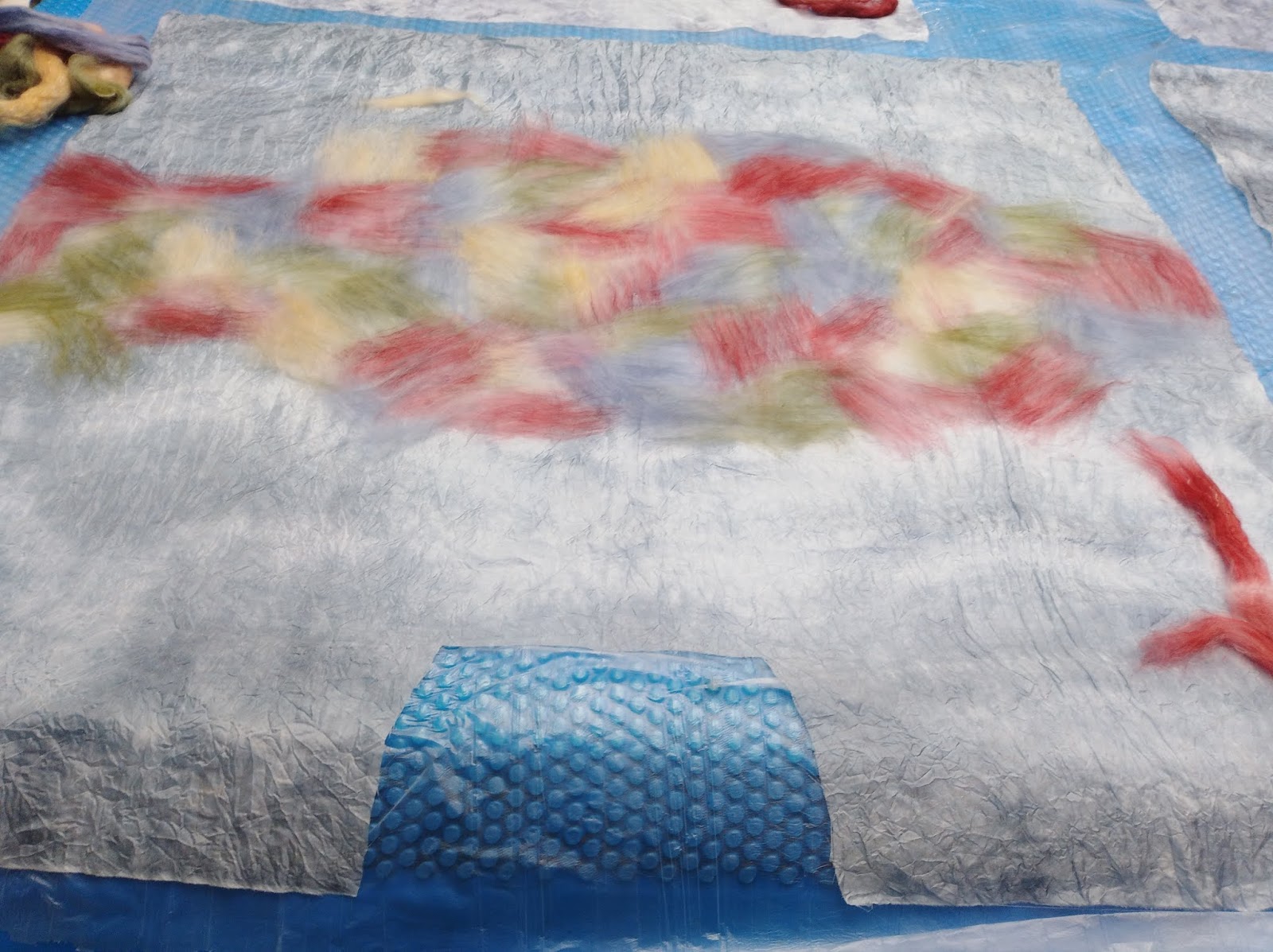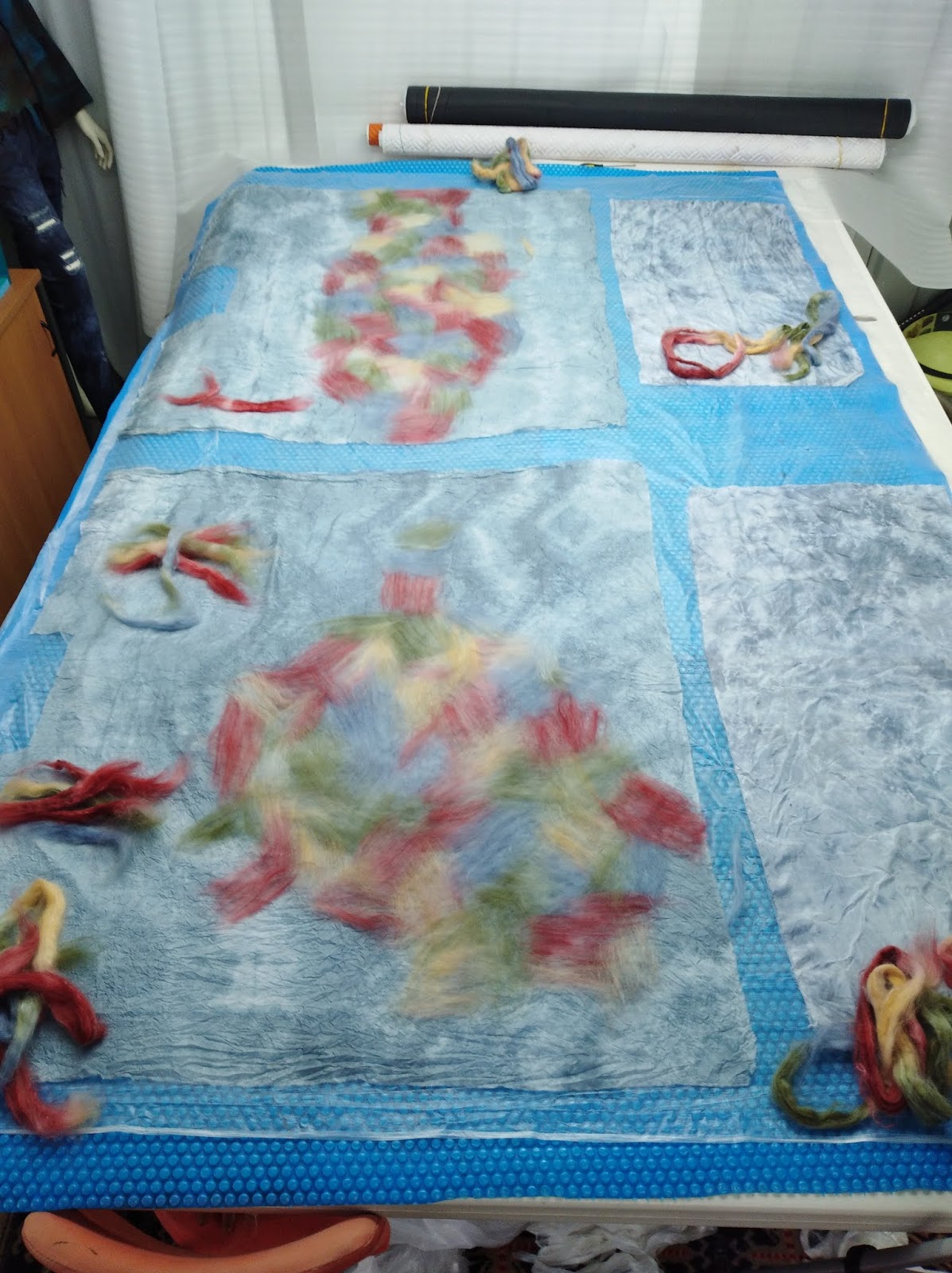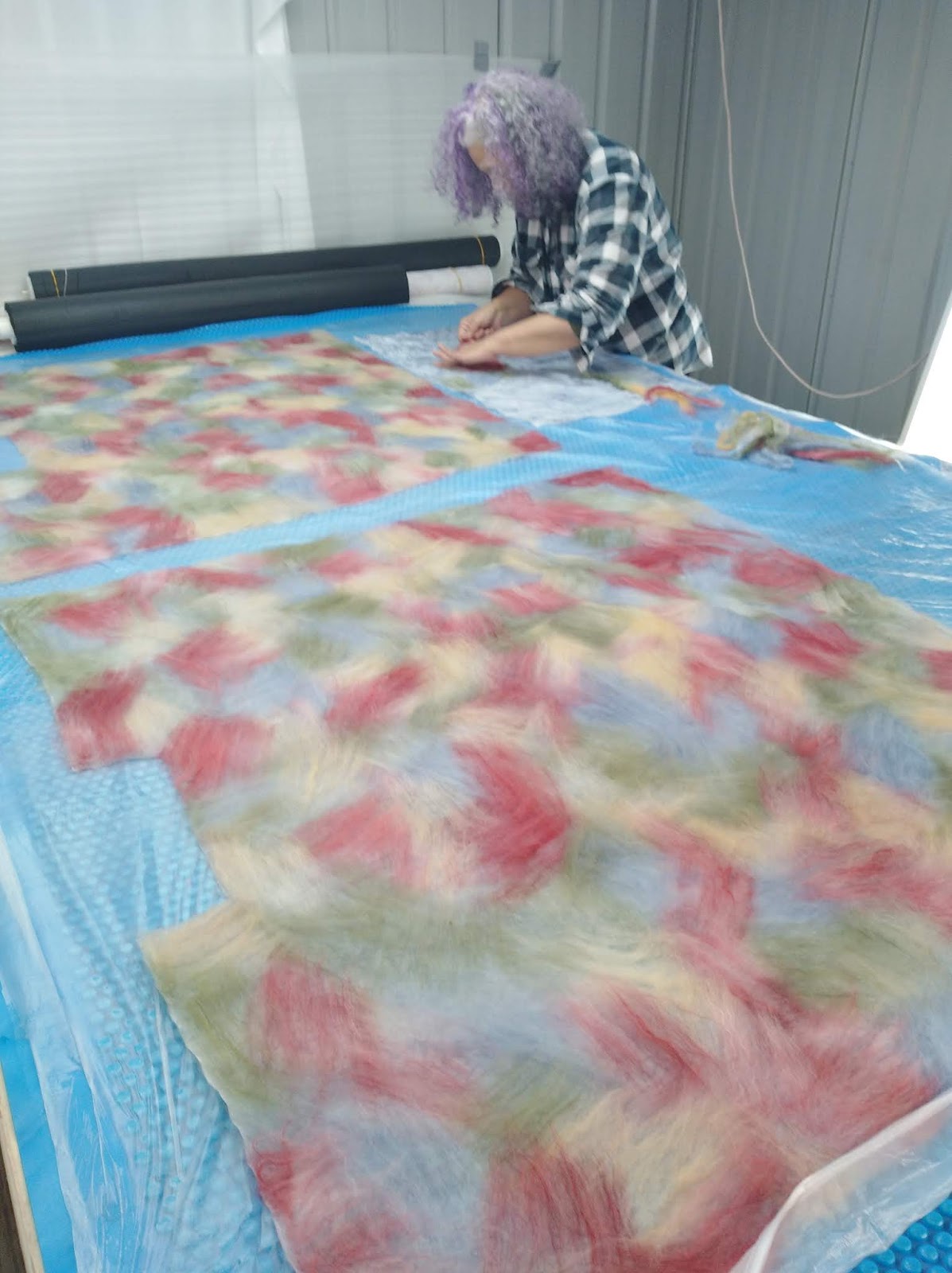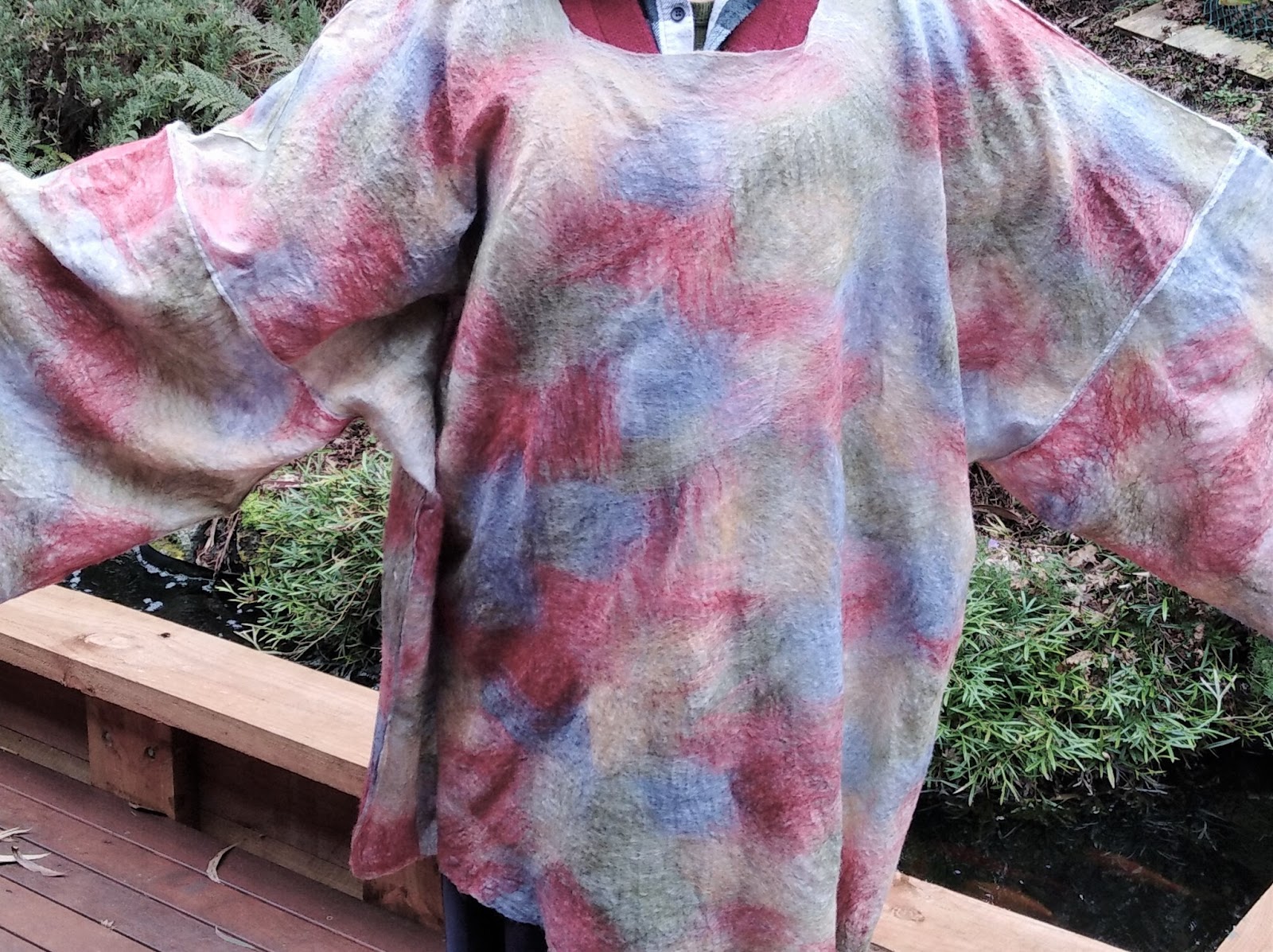Recently I took umbrage to someone
mentioning the dryer method of rolling (as well as giving the website) on one
of my Joni Cornell Merino-Silk posts. Some
of you know that I have recently been making felt to promote The Gentle Roller
and Fulling Drum – a purpose built wet felting machine.
To date I’ve kept
my own counsel on the dryer method but in the interest of ensuring current and
future felt makers are better informed, I’ve decided that it would be
educational to make a couple of comments that felt-makers might wish to
consider before continuing (or starting) to use this method.
Sustainable making: Using the dryer is not a sustainable way of
making felt.
According to the
Consumer Energy Centre the clothes dryer is one of the most energy hungry
appliance in the house. A usual dryer
will use between 1800-5000 watts, say 3000 watts on average. If you are not using the heat cycle, but just
blowing air, let’s say 2000 watts on average.
On average the Gentle
Roller uses around 20 watts per hour of use.
Using the electric dryer, you’d be burning at least 100 times the energy
of a Gentle Roller.
Usually, a felt maker
will tend not to use the household dryer but an older version, which would be more
inefficient and use higher wattage. Several
felt makers who have used the dryer method have commented to me on the very
noticeable increase in their electricity bill when they are busy felting. And it’s not only your electricity bill that takes
a pounding. The environment is impacted
also.
If you are thinking
‘sustainability’, don’t think ‘clothes dryer’.
Safety:
The website which promotes the dryer method advises that for your safety
you should mount your dryer upside down, as the electrics are on the
bottom. This is incorrect and dangerous
advice.
Unless you have a
wiring schematic for your dryer you simply don’t know where the electrical
wires are located, and most will have electrical wiring at both top and
bottom. Here is a Whirlpool dryer with
wires in the top and bottom.
 |
| Sourced from the internet |
Promoters of the
dryer method who acknowledge a potential safety issue should not compound their
error by giving misinformation that turning the machine upside down makes it
safe. It does not!
Insurance: If you believe “it will never happen to me”
then cancel your house insurance policy and save your money. But if you wisely have house insurance, you
want to make sure you don’t compromise it.
Your felt making bundle
probably carries more water than the damp clothes coming from the washer (irrespective
of rolling in a dry towel and securing with ties). If your dryer has a short-circuit, injuring
someone or starting a fire, you’ve provided your house insurance or public
liability insurance company (if in a rented studio setting) with an immediate excuse to
reject your claim outright.
Using an electrical
appliance to do something it was not designed to do is a misuse of an
electrical appliance and will immediately cancel most insurance policies. (Of course, you can always lie and gamble on
the consequences…)
When I first came
across the ‘dryer method’ our instructor was unable to demonstrate it because
of public liability issues – the venue managers strictly forbade using the
dryer for anything other than its intended use, as they knew their insurance
would be in jeopardy.
When I started out felting
I was chuffed that I could adapt certain materials, such as a bamboo blind or a
piece of dowel – but now that I’m mature in my practice (not to mention my body)
it’s time to be more mature and responsible regarding the equipment that I use.
Using the dryer to
roll your felt and then the washing machine for ‘finishing’ is rather like
using an iron to char your steak.
The Gentle Roller
and its Fulling Drum have been specifically designed for felt making - to take
away the tedium and labour involved in manual rolling. The fulling drum is the pièce de résistance–
as you can use it to full your felt with as much, or as little, hand
intervention as you desire to shape your finished piece.
The Gentle Roller is
safe, attractive, controllable and, as quiet as a library. It can also roll felt from super-fine Nuno to
carpet runners twice as dense as industrial carpet.
Oh, and it is not
recommended that you use it for any purpose other than felt-making 😉.
 |
| The Gentle Roller - for wet felt rolling |
 |
| The unique Fulling Drum |









